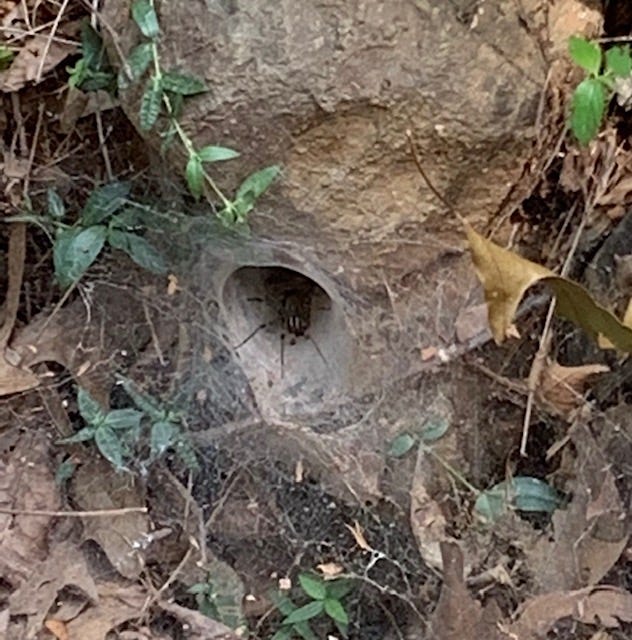Hi! It’s Beatrice. I’ve been at horse camp all week which has been awesome. But I’m here now to tell you about spiders. I’m so glad you all like spiders so much, and allow them to live in your houses and watch TV with you. I like spiders too, and I am the official wolf spider relocation specialist in our house.
Did you know that spiders make many different kinds of webs? The photo above is spider in a funnel web that I saw on a walk. Funnel webs give a spider a good place to hide, and also a great place to take their prey and devour it!
This is a good article about other kinds of webs, including orb webs and cob (or tangled) webs. Not all spiders spin webs though—some get their food by jumping, making trapdoors, or just ambushing their prey.
Here’s a cool time-lapse video of a spider making an orb web:
Spiders have so many good qualities, like web weaving and cleverness, that they are featured in many myths and traditional stories. Here are a few spider stories we like:
Anansi the Spider is a trickster spider from the Ashanti people of Ghana. Here is a great video of our favorite Anansi story:
In Japan, the ancient Goblin Spiders start out as normal spiders (warning: this might make you more scared of spiders if you are prone to that). Once the spiders turn 100 or 200, they are allowed to become Goblin Spiders. In the daytime, they’re just little spiders—nothing to worry about. But, at nightfall, they are very dangerous. They can shift their shapes and turn into anything they want. Sometimes Goblin Spiders do this to get prey, to trick people, or to get revenge. Here is a scary 1899 story of The Goblin Spider.
Arachne, from Greek mythology, was a young girl who had a talent for weaving. Thousands of people would come to see her weaving. It was like the pictures she wove into her weaving danced across the cloth. She used to be humble, but when people told her she was great, she began to believe that she was great too. She entered every contest, and easily won. One day she claimed she was better than Athena, goddess of weaving (and wisdom) herself. Can you guess how this would go?
Not well! Athena was of course enraged, but first she tried to convince Arachne out of comparing herself with a god. Then when that didn’t work, Athena appeared in all her glory. Arachne challenged her to a weaving contest, and Athena accepted. And then, the contest was on. They both finished at the same time. Athena’s weaving showed the gods in all their glory. Then Athena went to see Arachne’s weaving. It showed gods doing bad things like carrying off women, which gods actually do anyway (no offense, gods!).
Athena, as you can imagine, was furious. Athena tore the tapestry to shreds, and then tapped Arachne on her shoulder. Arachne’s head became smaller, and so did her body. Then she became a spider. A class of animals was named after her—the arachnids. Lucky for Arachne, Athena took mercy on her, because she can still weave.
And in Italy, they even have a folk dance named after a spider: the tarantella, which comes from the (incorrect) idea that a tarantula’s bite could only be cured by a frenzied dance.
Here is a Sicilian folk dance group dancing the tarantella:
Do you have a favorite spider story or myth? Or spider dance?




Bea! you are the “bees knees “ “the car’s pajamas “the cats meow” and every other cool thing a nature loving
river dwelling country kid can be!
your post so witty entertaining and informative! your photo s and videos
so great! the next time i see your unkle Skipper i am going to challenge him to a tarantula dance off!
That Tarantella video is SUPER FUN.